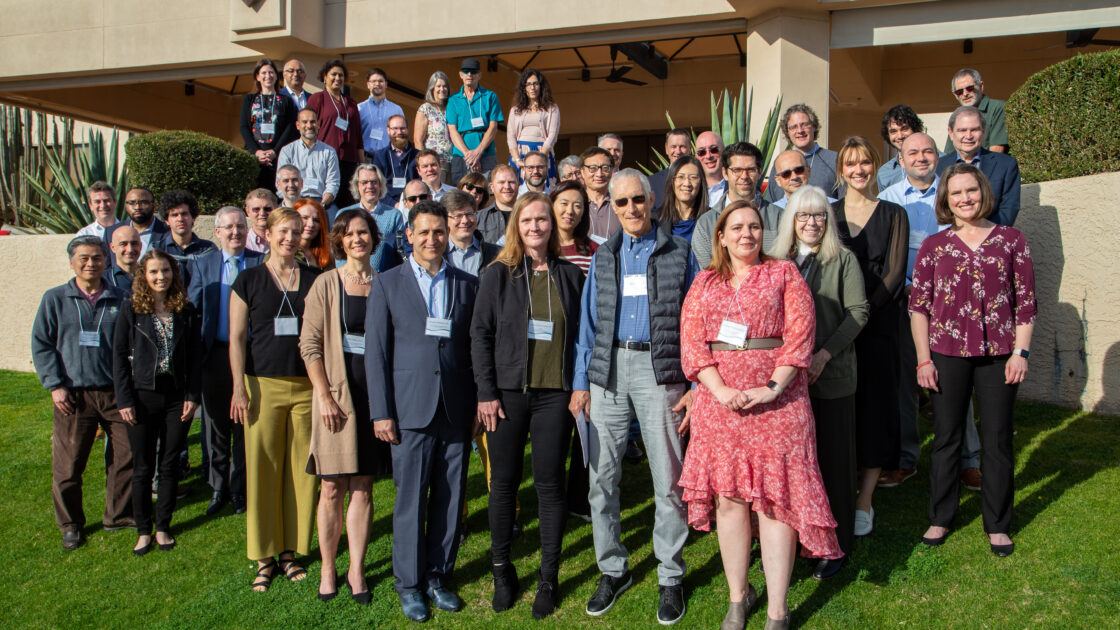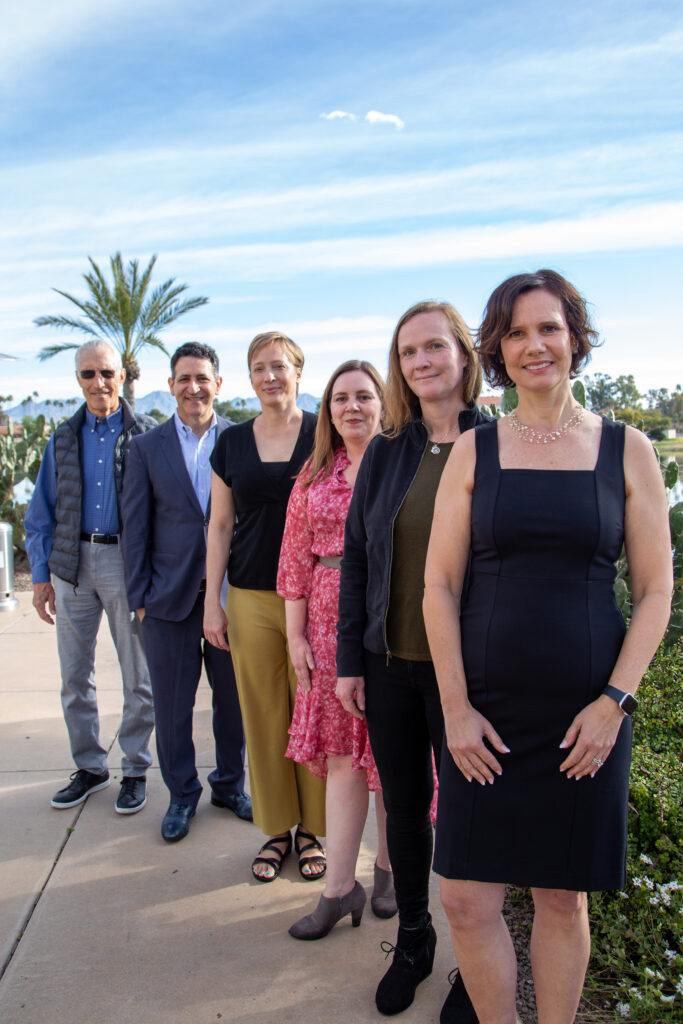
Scientists, Clinicians Brainstorm Future of C9orf72 ALS, FTD Research
A recent summit hosted by Barrow Neurological Institute united scientists and clinicians nationally and internationally with a shared goal: to improve the lives of people with C9orf72-associated ALS and FTD. This meeting of minds aimed to erode research silos and to collectively identify future research focuses.

Barrow Neurological Foundation worked with David and Weezie Reese and the Arizona Community Foundation to support the inaugural Translational Neuroscience C9orf72 FTD/ALS Summit in Scottsdale, Arizona. Other steering committee members included researchers from the Translational Genomics Research Institute; the Association for Frontotemporal Dementia; and the University of Nevada, Las Vegas.
Mutations in the C9orf72 gene represent the most common cause of genetic amyotrophic lateral sclerosis, accounting for about 25% to 40% of familial ALS cases and 6% of sporadic cases. This gene also causes about 25% of familial forms of frontotemporal dementia (FTD) and about 10% of sporadic FTD cases.
“The meeting, directly supported by a donor gift, allowed physicians and scientists to brainstorm on how two distinct diseases are driven by one genetic mutation,” said steering committee member Marwan Sabbagh, MD, a behavioral neurologist in the Alzheimer’s and Memory Disorders Program and Vice Chair of Research for the Department of Neurology at Barrow. “The discussions were consequential insofar that impactful science will come forth.”
In Focus: Biology, Biomarkers, and Therapies
The summit offered sessions in disease biology, biomarker development, gene and small molecule therapies, and clinical trial design. It welcomed basic scientists, clinical researchers, drug developers, and individuals affected by C9orf72 ALS and FTD.
“I was extremely happy to see that the inaugural summit brought together, for the first time, scientists and clinicians from both sides of the FTD/ALS spectrum,” said Rita Sattler, PhD, a professor in the Department of Translational Neuroscience at Barrow who chaired the meeting’s steering committee. “Most importantly, everyone appreciated that this unique gathering stimulated discussions on how we can work together more efficiently to uncover disease mechanisms, novel biomarkers, therapeutic approaches, and clinical trial designs toward C9orf72 FTD and ALS.”
Everyone appreciated that this unique gathering stimulated discussions on how we can work together more efficiently to uncover disease mechanisms, novel biomarkers, therapeutic approaches, and clinical trial designs toward C9orf72 FTD and ALS.
Rita Sattler, PhD, Professor, Department of Translational Neuroscience
Biomarker development could benefit patients at every stage of care—from identifying people most at risk of developing these diseases, to predicting and monitoring disease progression, to evaluating treatment effect. Summit participants discussed the potential of specific molecular changes as biomarkers—namely in the neurofilament light, DPR, and TDP-43 proteins. Additionally, they emphasized the importance of brain imaging modalities—such as magnetic resonance imaging (MRI) and positron emission tomography (PET)—to measure structural, functional, and metabolic changes related to C9orf72 ALS and FTD.
Conversations about therapeutic strategies centered on the use of short DNA-like molecules called antisense oligonucleotides to alter gene expression, adeno-associated viral vectors for gene silencing and gene delivery, and engineered small molecules to target RNA structures associated with the C9orf72 mutation.
The scientists and clinicians also evaluated existing clinical trials and contemplated future trial designs. They reached a consensus to test future therapeutics with composite endpoints covering clinical symptoms of both FTD and ALS.
Creating Momentum
Many questions remain about C9orf72 ALS and FTD. Why do some people only develop symptoms of ALS, some only develop symptoms of FTD, and others develop symptoms of both? What molecular and cellular changes precede symptoms, and how early do they occur? How do non-neuronal cells respond to the mutation and contribute to the death of nerve cells? Furthermore, do these contributions differ between the brain’s frontal cortex and the spinal cord?
“While we have learned that there is still a lot to be done,” Dr. Sattler said, “we also realized that sharing diverse perspectives created momentum in the C9orf72 community to continue these complementary discussions beyond the summit, and eventually share their impact on C9orf72 research and patient care at the next meeting scheduled for 2025.”
